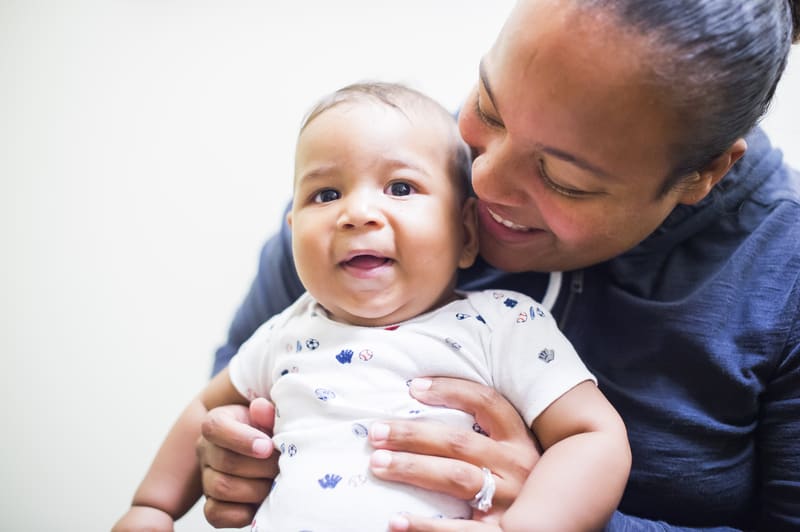Is my baby squeaking?

The birth of a baby brings a new life filled with joy and excitement. But the first year can also be a time of worry about your baby’s health, especially for new parents.
“I often see parents in my clinic who are worried that their babies are not breathing normally. They hear their babies making all kinds of different sounds when breathing, eating, or sleeping,” says Dr. Janine Amos, a pediatric ears, nose, and throat specialist. “It’s not uncommon for parents to describe their baby as “squeaky,” and of course they are worried there’s a problem with their child’s throat or airways.”
Fortunately, Dr. Amos’s advice is reassuring. The noisy squeaking sound is often not serious and goes away on its own for most babies in their first year.
“Squeaky breathing, also known as stridor, is caused by soft or “floppy” tissues around the baby’s vocal cords,” notes Dr. Amos. “As the baby breathes in, the extra tissue around the larynx (voice box) briefly blocks the airway causing a squeak.”
Does my baby need treatment?
“The floppy tissues around the larynx causes a condition called laryngomalacia (also known as “noisy breathing”), something usually present at birth or observed in the first few weeks as the baby begins to take deeper breaths,” explains Dr. Amos.
In addition to squeaky or noisy breath sounds caused by this condition, parents may also notice signs such as:
- The baby’s neck or chest pulls in with each breath.
- Noisy breathing can “interrupt” or lengthen feeding times.
- Low weight gain may be noted by the baby’s pediatrician during routine checkups.
- Reflux, or frequent spit up, may worsen symptoms.
- Symptoms are often worse when laying flat, feeding, or crying.
As a pediatric ear, nose, and throat specialist, Dr. Amos sees babies to adolescents with a range of voice or upper airway disorders. “While many babies simply require observation and eventually outgrow laryngomalacia, it is important to get a proper diagnosis — we want to rule out other conditions that may potentially be more serious,” she remarked.
How Is laryngomalacia diagnosed?
The best way for a pediatric ENT doctor to thoroughly examine the inside of your baby’s throat is a simple office procedure called a flexible laryngoscopy, explains Dr. Amos. The doctor gently inserts a tiny camera, about the size of spaghetti, through the baby’s nose and down the back of the throat to look at the tissues around the voice box.
“Although we need to do this procedure while your child is awake in order be able to evaluate how the vocal cords are working, we are in and out so quickly your baby will barely have time to cry or fuss,“ she assures nervous parents.
Treatment for laryngomalacia most often include medications to help with your baby’s reflux or simply observing and monitoring your child’s symptoms for the first year or two. Luckily, only a tiny fraction of pediatric patients ends up needing surgery to trim the loosened throat tissues that cause squeaky breath sounds.
Do you have questions or concerns about your child’s breathing?
At Mary Bridge Children’s Ear, Nose, and Throat Clinic, we regularly treat all types of airway issues causing noisy breathing, including laryngomalacia. If you are worried about your baby’s breathing, ask your pediatrician or primary care provider for a referral to see one of our Mary Bridge Children’s pediatric ENT specialists.
Call 253-403-7777 to schedule an appointment or for any questions. We look forward to meeting you and your little one.



